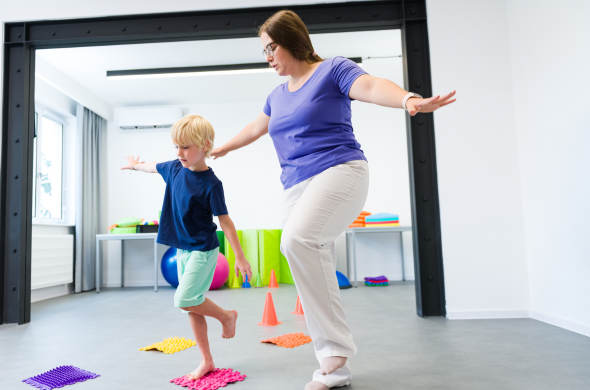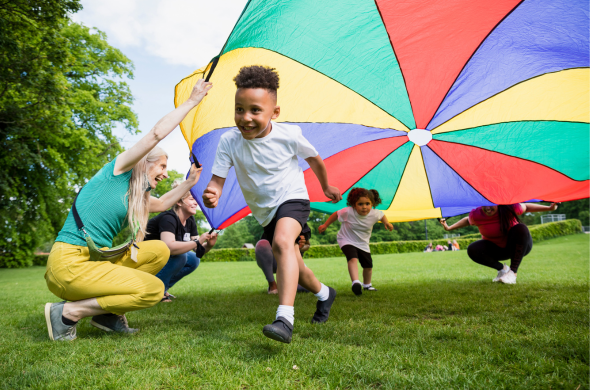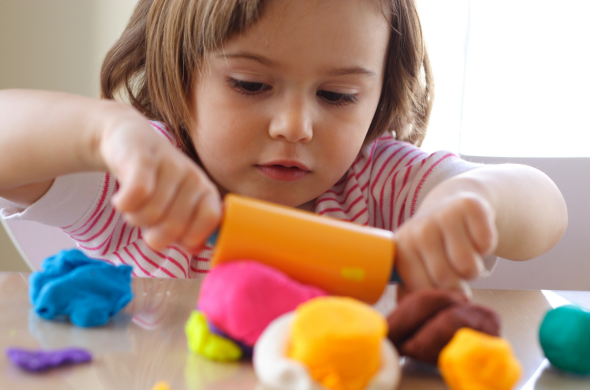
Classroom Behavior Management Ideas to Try
Teaching children to manage their emotions is essential in the 21st century. A unique and effective way teachers can do this is by giving opportunities for regulating emotions through proprioceptive input activities.
Proprioceptive input, the body’s sense of position and movement, relies on sensory input from joints and muscles. These activities, sometimes called “heavy work,” can calm the nervous system, regulate the body, and improve focus by providing grounding sensory input.
According to an article by Occupational Therapy Helping Children, proprioception is often referred to as a sixth sense because it tells the body where it is in space.
The article explains: “It’s very important to the brain, as it plays a large role in self-regulation, coordination, posture, body awareness, focus, and speech. Proprioception is the sense that lets us know where our different body parts are, how they move, and how much strength our muscles need to use.”
Proprioceptive input activities engage the muscles and joints and give the brain feedback about the body’s position and movement. This feedback is important because it helps regulate the nervous system. This is why these activities can be particularly beneficial for children who struggle with emotional regulation or behavior issues.
By incorporating proprioceptive activities into the daily routine, teachers can give students skills and opportunities that help create a calmer and more focused classroom environment.
Here are some sensory strategies for proprioception you may like to try with your class.
Whole Group Brain Breaks
Animal Moves
Encourage children to move like various animals, such as jumping like a frog, stomping like an elephant, hopping like a bunny, crawling like a cat, or slithering like a snake.
Free Dance
Creative movements help people connect with their bodies and have fun with rhythm. Whether dancing, jumping, or moving freely, these activities let you express yourself and figure out what your body can do. It’s a great way to boost your creativity while staying active and building confidence, too.
Swinging
Swinging motions help a child’s nervous system by providing visual, vestibular, and proprioceptive stimulation. Students can stand and sway in place. They can also use scarves to swing and swish for a visual effect.

Push-ups
This classic exercise engages multiple muscle groups and provides proprioceptive input. If your class needs a quick brain break, have them stop, give you a push-up or two, and then hop back into their chairs and continue learning.
Wall Pushups
If there isn’t enough space for everyone to do a full push-up, another variation is a wall push-up. In this variation, you place both hands flat on the wall and move your feet back until they are slightly further than arm’s length from the wall. Next, lean your body towards the wall and then push back to your starting position. Alternatively, extend your arms and push both hands against the wall for 5-10 seconds.
Chair Push-Ups
Students sit in a sturdy chair and place their hands on the edge of the seat. They then lift their bodies up and down using their arms, engaging their muscles and providing proprioceptive input.
Balancing Activities
Encourage students to improve their balance by practicing standing on one leg, walking along a balance beam, and trying yoga poses like the tree pose or warrior. These activities enhance coordination, focus, and body awareness.

Bear Hugs
Wrap your arms around your own chest or knees and give yourself a big, firm, loving hug.
Jumping in Place
This action is great for improving body awareness and sensory input. Try it before activities that require students to be aware of their bodies, such as circle time or walking in line. It helps wake up the leg muscles by providing sensory input.
Squats and Lunges
These exercises help strengthen the main muscles in your legs, such as the quads and calves, while improving balance and stability.
Yoga and Stretching
Many yoga poses and stretching exercises give your body helpful sensory feedback and can help relax your nervous system. Try yoga and stretching with daily mantras right after recess for a quick calm down and refocus.
Recess Time
Climbing
Activities like jungle gyms, monkey bars, and rock walls are fun and great for children’s body awareness! Kids build strength and coordination as they climb and swing across monkey bars. Climbing rock walls helps them stretch for handholds and boosts their confidence while developing essential motor skills.
Jumping Activities
Jumping jacks, jump rope, or jumping on a trampoline are great ways to get proprioceptive input. They’re fun and keep you active while helping you feel more aware of your body in space.
Swinging
Students can stretch and learn to take turns by pushing one another on the swings.
Parachute
Whole-group parachute activities that use teamwork to move the large parachute back and forth and lift it up and down to music are great for a fun PE or outdoor activity.

Running
Students can run around the playground with big, wide, strides.
Bounce
Use a large ball to sit on and bounce in place as many times as you can without falling off.
Fine Motor Skills at Desks
Playdough
Squeeze a small amount of playdough or modeling clay in the hands or between the fingers to warm up before writing.
Sensory Balls
Move a weighted sensory ball back and forth across your desk to prepare the arms for painting, drawing, or holding a book to read.
Finger Push-Ups
Do finger push-ups or rubber band stretches between fingers to strengthen fine motor skills.

Classroom Helpers
In an article called “Classroom Sensory Strategies for Proprioception Input,” OTPlan recommends unique ways to provide “heavy work” by incorporating class jobs such as:
- Carrying books by hugging to the chest and moving. Students can help move books from their teacher’s desk to the class library and stacking on the shelves during clean-up time
- Being the door helper and holding open the door for their class to go through is a favorite for sure because it makes them feel so special!
- Helping by sharpening pencils
- Helping the teacher arrange desks when needed
- Stacking the chairs at the end of the day
Teacher tip:
If you want to try proprioceptive input activities in your class, be mindful of individual needs. Students may respond differently to certain activities. Some may love them, and others may find them too difficult or overwhelming. Some children may have sensory sensitivities and may not enjoy certain movements.
Observe students closely and be prepared to offer alternative activities to children with sensory sensitivities who may be uncomfortable with certain activities. Always supervise children during proprioceptive activities to ensure a safe environment.
I hope you found these ideas helpful and can think of times in your school day when they could easily and naturally fit in. Whatever you choose, a tip is to keep it simple and fun because the key to a child’s heart is through play and enjoyment.
By providing opportunities for proprioceptive input in a fun and engaging way, teachers can help children learn to manage their emotions and create a more positive and productive learning environment.
Warmly,
Debbie
 Debbie Bagley works as a Studies Weekly Teacher Advocate. Teacher Advocates are former teachers who help teachers like you implement Studies Weekly materials into their instruction. Teacher Advocates are available to provide support through email, phone call, video chat, and regularly scheduled Teacher Talk Webinars on Tuesdays and Thursdays. Teacher Advocates are only available for classroom teachers currently using Studies Weekly materials. They are not available for homeschools.
Debbie Bagley works as a Studies Weekly Teacher Advocate. Teacher Advocates are former teachers who help teachers like you implement Studies Weekly materials into their instruction. Teacher Advocates are available to provide support through email, phone call, video chat, and regularly scheduled Teacher Talk Webinars on Tuesdays and Thursdays. Teacher Advocates are only available for classroom teachers currently using Studies Weekly materials. They are not available for homeschools.